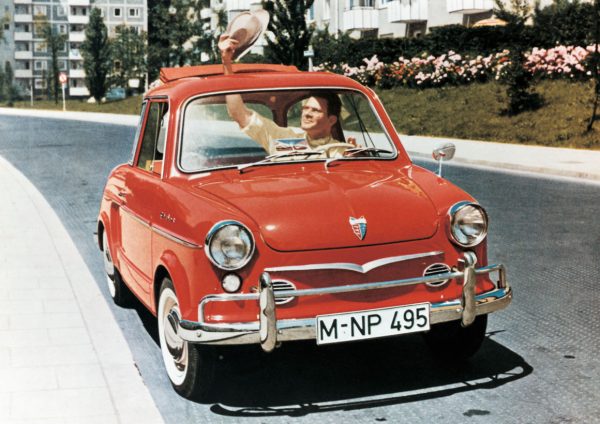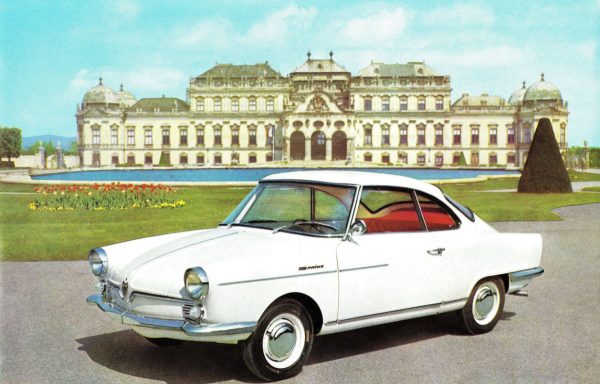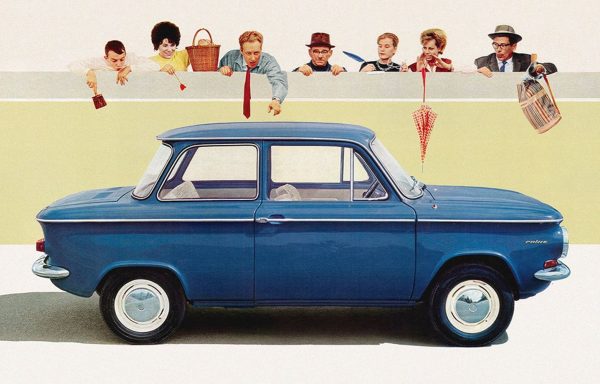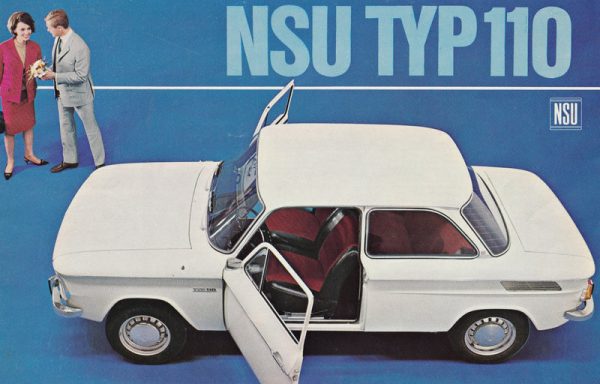NSU Prinz II
The Evolution of an Icon
The NSU Prinz II, launched in 1959, represented the evolution of NSU’s compact car vision, building on the success of its predecessor, the Prinz I. With improved performance, enhanced design, and greater comfort, the Prinz II continued to solidify NSU’s reputation for producing reliable and economical vehicles. This model was an essential step in the development of NSU’s automotive legacy, combining innovation with practicality.
The NSU Prinz II was an important evolution of NSU’s successful Prinz series, introduced in 1961. Designed to be a compact and practical car, the Prinz II built upon the strengths of its predecessor while offering improvements in performance, comfort, and design. It became known for its affordability and efficient use of space, appealing to a broad audience.
Historical Background
The NSU Prinz II was launched as an upgrade to the original Prinz model, which had gained popularity in the late 1950s. The new model aimed to maintain the same successful formula of compact size and economical performance while addressing consumer demands for more power and comfort.
As part of NSU’s strategy to dominate the small car segment, the Prinz II was marketed towards young families and urban drivers who needed a reliable and economical vehicle. Its practical design and competitive pricing contributed to its success in the market.
Technical Specifications
The NSU Prinz II featured a modestly powered engine and a practical design, making it a versatile option for everyday use. Here are the key specifications:
- Displacement: 996 cc
- Compression Ratio: Approximately 8.5:1
- HP Output: 50 hp at 5,800 rpm
- Torque Output: Approximately 7.5 kg/m at 3,500 rpm
- Transmission: 4-speed manual
- Length: 3,320 mm
- Width: 1,460 mm
- Height: 1,390 mm
- Weight: Approximately 800 kg
- Wheelbase: 2,250 mm
- 0-100 km/h: Approximately 16 seconds
- Top Speed: Around 130 km/h
Design and Mechanical Features
The NSU Prinz II combined a practical design with a range of features aimed at enhancing comfort and usability.
- Compact Exterior Design:
- The Prinz II retained the compact shape of its predecessor but introduced a slightly more rounded design with updated styling elements. This made it visually appealing while maximizing interior space.
- The two-door layout provided easy access to the rear seats, enhancing practicality for families.
- Air-Cooled Inline-Four Engine:
- The Prinz II was powered by a 996 cc air-cooled inline-four engine, which provided sufficient power for city driving and light highway use. The engine’s layout helped keep the weight low, contributing to the car’s agility.
- With an output of 50 hp, the Prinz II offered a good balance of performance and fuel efficiency for a small car.
- Suspension System:
- The front suspension utilized a MacPherson strut design, while the rear featured a solid axle with leaf springs. This combination provided a comfortable ride and reasonable handling for everyday driving.
- The suspension setup allowed the Prinz II to handle well in urban environments while maintaining stability on highways.
- Interior and Comfort Features:
- The interior of the Prinz II was designed with functionality in mind, offering enough space for up to four occupants. The dashboard was simple and easy to read, with essential controls positioned conveniently for the driver.
- The seats were upholstered for comfort, making it suitable for longer drives.
- Braking System:
- The Prinz II was equipped with drum brakes on all four wheels, providing adequate stopping power for its size. This braking system was typical for small cars of the era, ensuring reliable performance in everyday driving conditions.
Driving Experience and Performance
The NSU Prinz II delivered a practical and enjoyable driving experience, characterized by its nimble handling and efficient engine. While not designed for high-speed performance, the car was well-suited for urban driving and commuting.
The lightweight construction and compact dimensions made it easy to maneuver in tight spaces, while the engine provided a responsive feel for city driving. The Prinz II’s comfortable ride and user-friendly design contributed to its popularity among families and young drivers.
Legacy and Impact
The NSU Prinz II played a significant role in NSU’s success during the 1960s, helping to establish the brand as a key player in the small car market. Its blend of practicality, economy, and reliability made it a favorite among consumers.
While production of the Prinz II ceased in 1972, it remains a classic example of compact car design from the era. Today, the Prinz II is appreciated by collectors and automotive enthusiasts for its historical significance and represents a time when small cars became increasingly important in the automotive landscape.
The legacy of the NSU Prinz II is a testament to NSU’s commitment to producing vehicles that meet the needs of everyday drivers while pushing the boundaries of compact car design. Its enduring popularity reflects the brand’s impact on the small car segment and the automotive industry as a whole.




